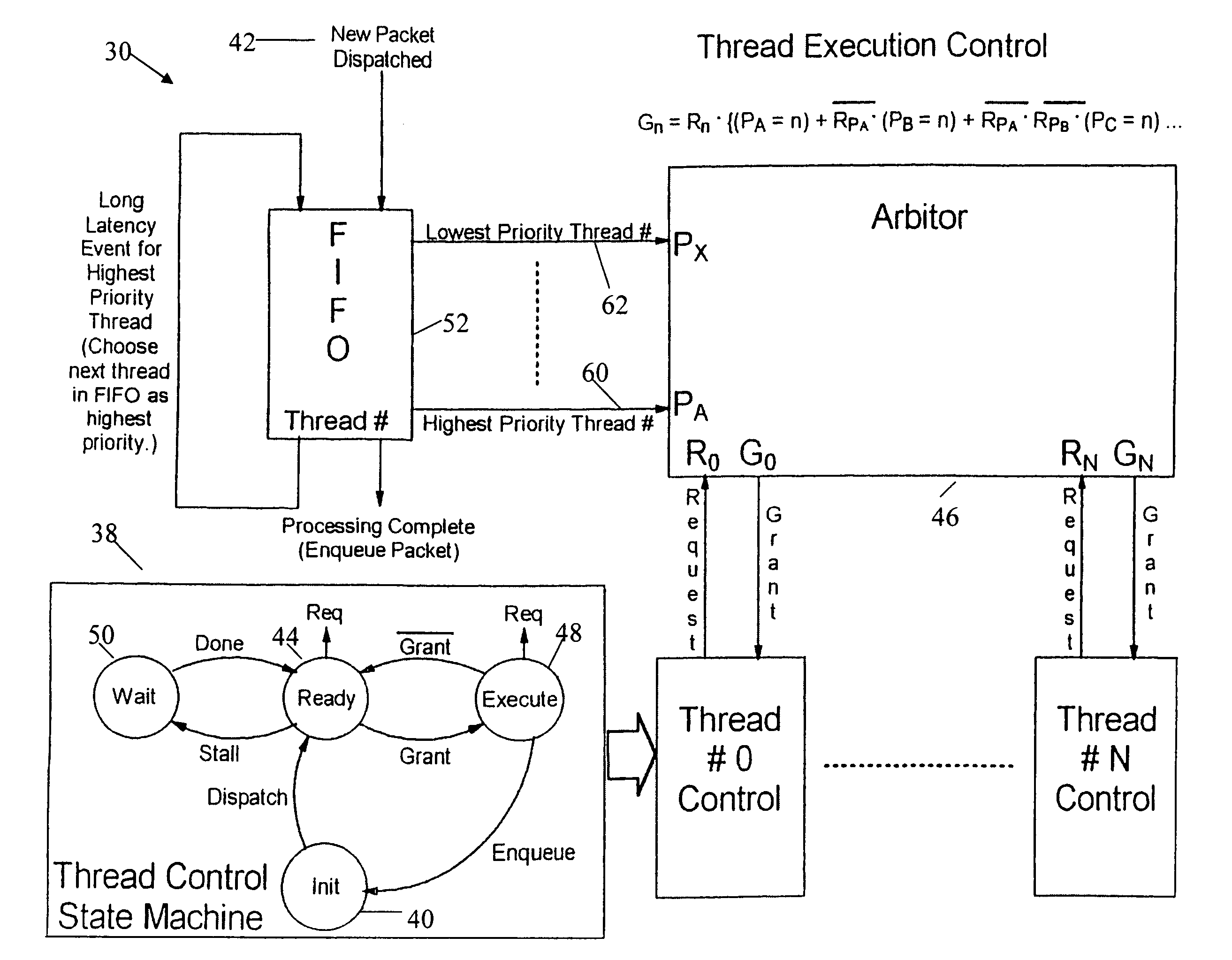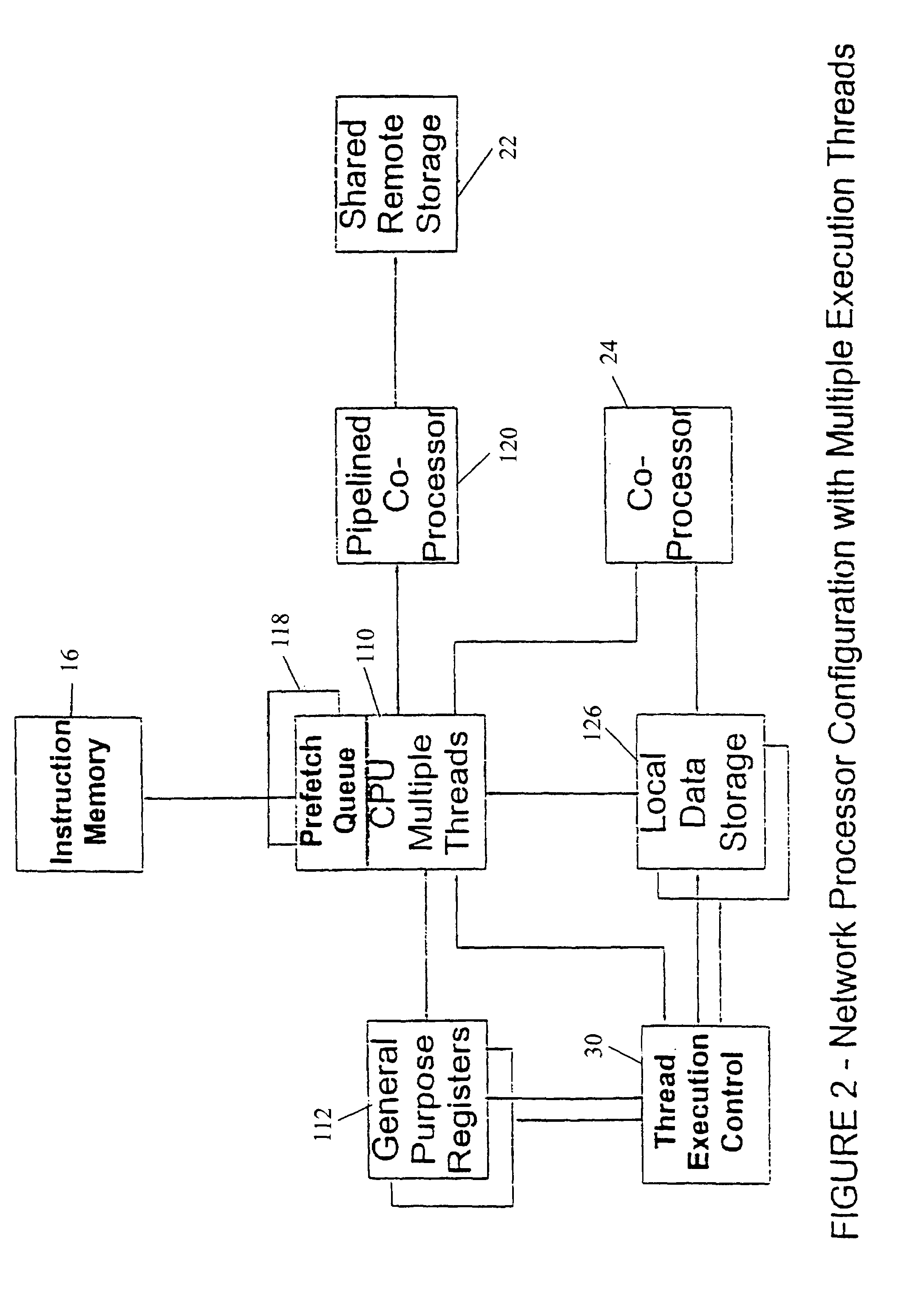Network processor which makes thread execution control decisions based on latency event lengths
a network processor and event length technology, applied in computation using denominational number representation, multi-programming arrangements, instruments, etc., can solve the problems of stalling cpu, increasing the number of machine cycles required to process packets, etc., and achieve the effect of reducing overhead
- Summary
- Abstract
- Description
- Claims
- Application Information
AI Technical Summary
Benefits of technology
Problems solved by technology
Method used
Image
Examples
Embodiment Construction
[0033]The current invention is distinct from the related art in that the invention specifically relates to independent processes in each of the instruction execution threads (each of which relates to a different packet being processed), and the invention specifically deals with latency in accessing data. Each of the execution threads is an independent process executing a sequence of instructions as the threads are allowed to gain access to the processor hardware. An additional aspect of the current invention is that the tree search coprocessor is pipelined to enable multiple execution threads to each have access simultaneously but at different phases (overlapping) in the tree search pipeline. Preferably, the invention employs multiple instruction execution threads with zero overhead to switch execution from one thread to the next. the threads are queued to provide rapid distribution of access to shared memory. Queueing of the threads serves to get the thread of highest priority to i...
PUM
 Login to View More
Login to View More Abstract
Description
Claims
Application Information
 Login to View More
Login to View More - R&D
- Intellectual Property
- Life Sciences
- Materials
- Tech Scout
- Unparalleled Data Quality
- Higher Quality Content
- 60% Fewer Hallucinations
Browse by: Latest US Patents, China's latest patents, Technical Efficacy Thesaurus, Application Domain, Technology Topic, Popular Technical Reports.
© 2025 PatSnap. All rights reserved.Legal|Privacy policy|Modern Slavery Act Transparency Statement|Sitemap|About US| Contact US: help@patsnap.com



